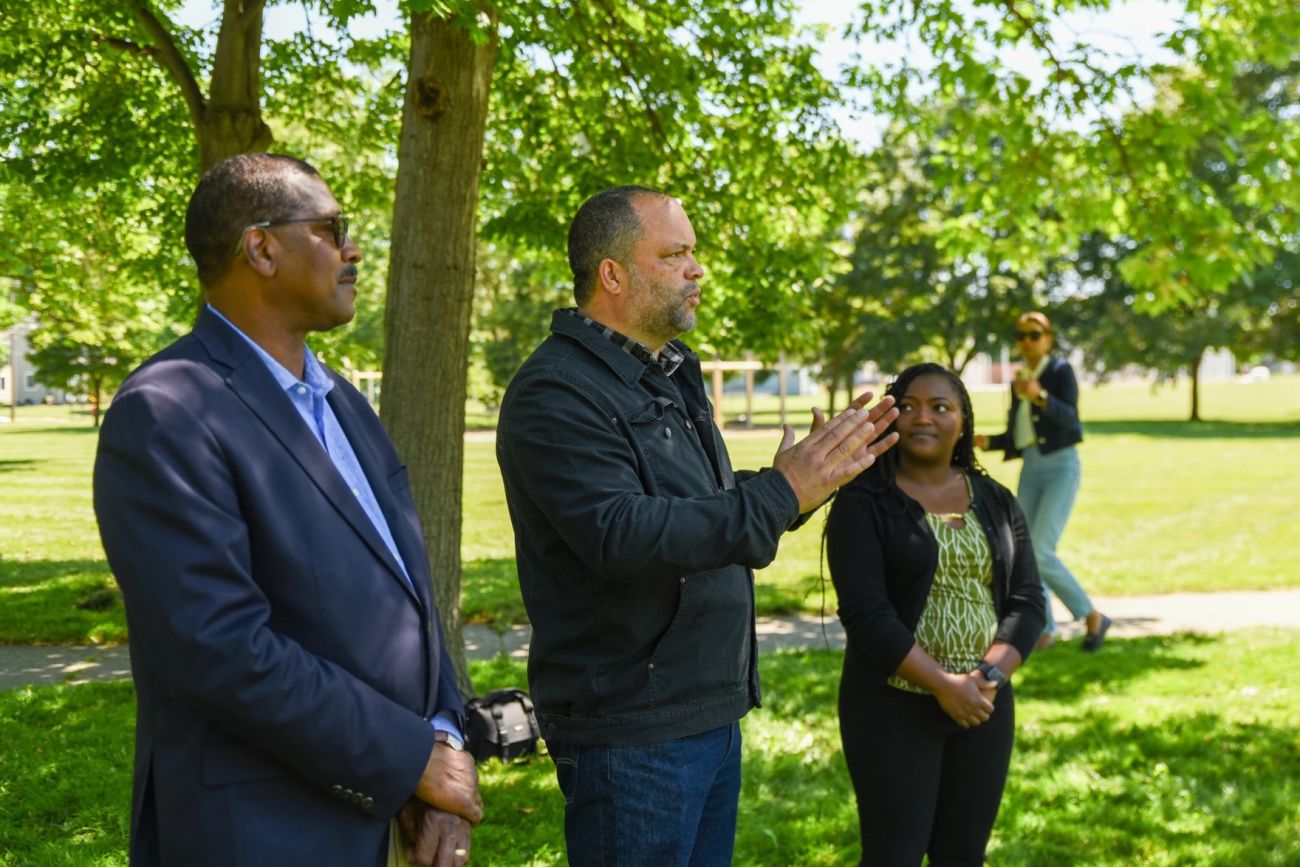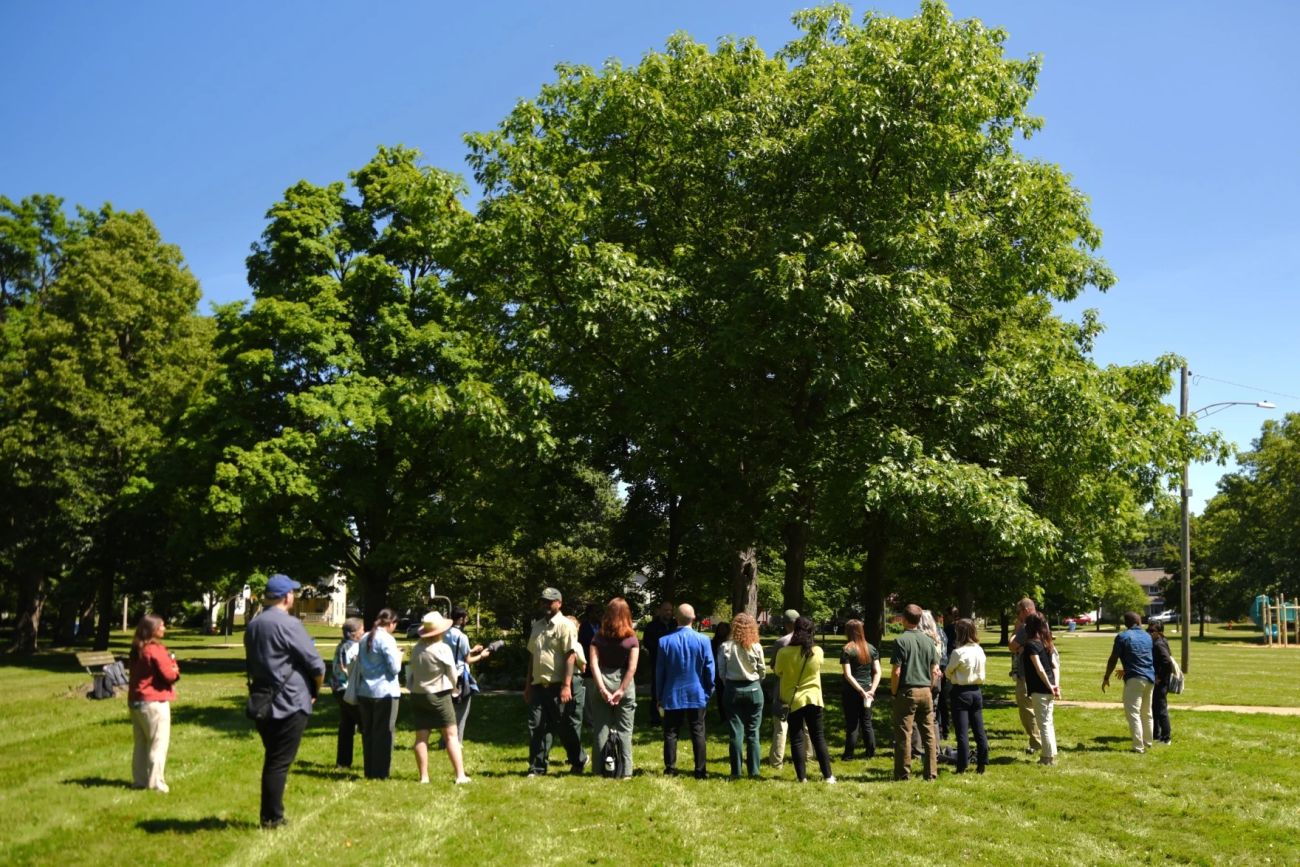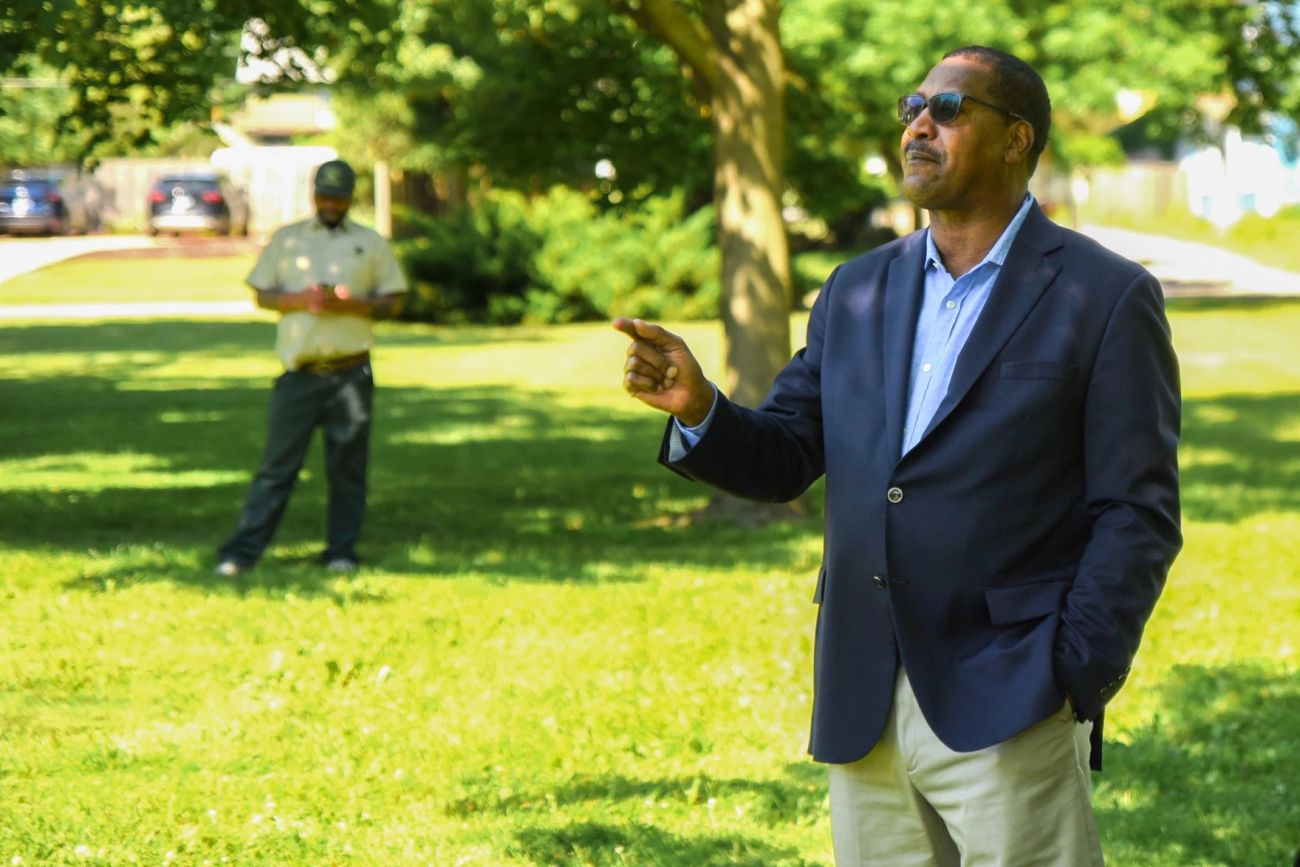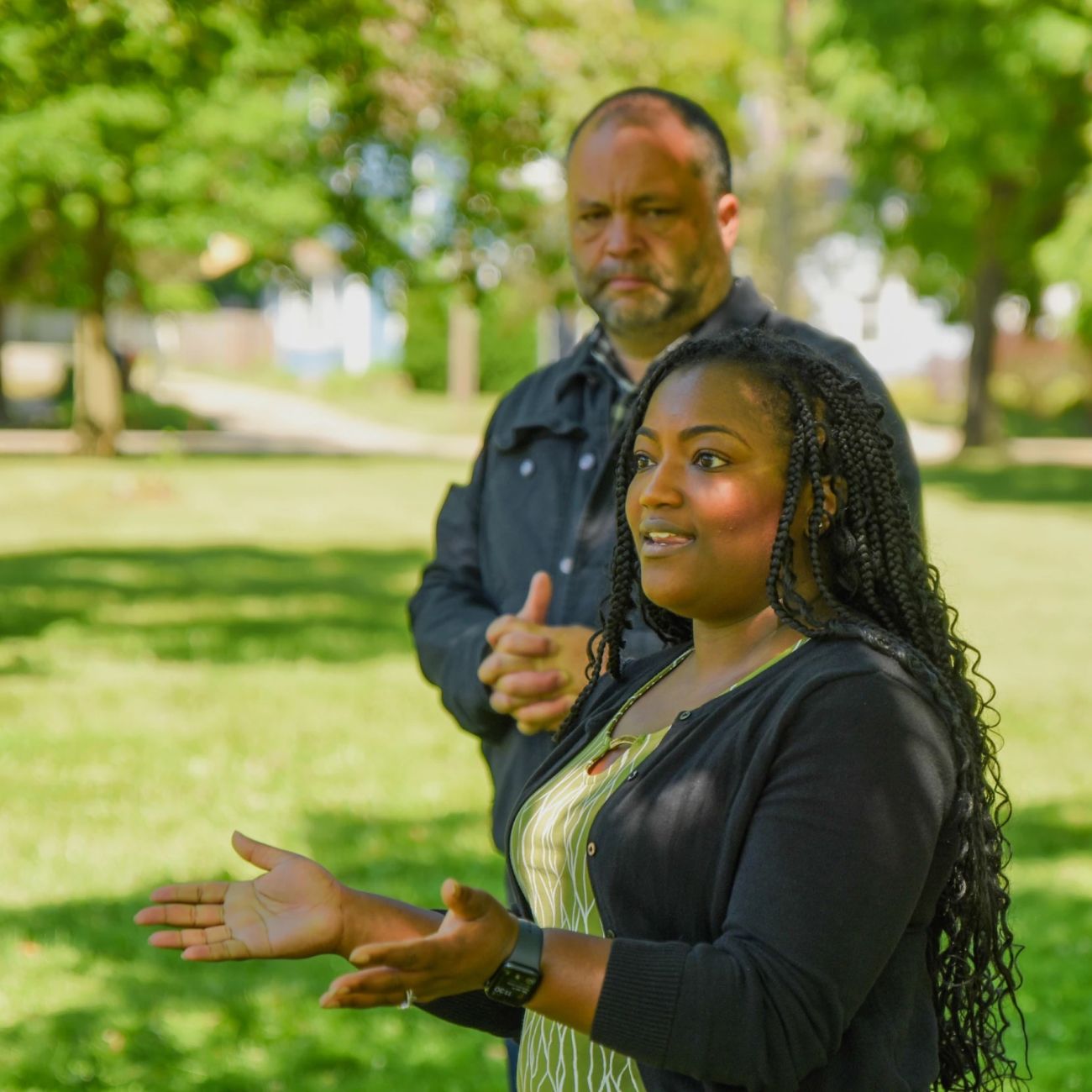Feds spend big on urban tree-planting in Michigan. Will residents get a say?

In a second round of money for urban forests, the U.S. Forest Service is visiting cities around the country to talk about more than one billion dollars has been awarded. Michigan is getting 33 million dollars of that.
There’s concern, though, about whether the neighborhoods getting those trees will have any say in what’s planted and where.
Great Lakes News Collaborative
Bridge Michigan, Circle of Blue, Great Lakes Now at Detroit Public Television, Michigan Public and The Narwhal work together to report on the most pressing threats to the Great Lakes region’s water. This independent journalism is supported by the Charles Stewart Mott Foundation.
Ben Jealous is the national executive director of the Sierra Club. He’s traveling with U.S. Forest officials to talk about the urban forestry money. In Lansing, they held a presentation under a tree at Ferris Park, a couple of blocks north of the Michigan Capitol.
“The Biden administration has made a historic investment in rebuilding urban tree cover exactly at the time when we need it most. Communities with more trees aren't just more beautiful, they're safer,” Jealous said.
Related:
- In urban 'heat islands' like Detroit, staying cool means getting creative
- Michigan medical students fight to make climate change part of curriculum
- Michigan communities consider installing solar panels on water
By safer, he means trees can help mitigate climate change-fueled heat waves. Urban areas with no trees can be several degrees hotter than areas with trees.
While more than a billion dollars for trees sounds like a lot of money, when you spread it across the nation, it’s just the beginning of an effort to reforest urban areas.

“I think this money can serve as a catalyst. You know, get it kickstarted out in these various communities. And the thing is, what's so important it's going to underserved communities whereby there hasn't been any real interest nor money to do anything there,” said Homer Wilkes, the U.S. Forest Service’s under secretary for natural resources and environment.
Some forestry experts believe urban tree planting is not something federal, state, or local governments have always handled well in underserved, underprivileged neighborhoods.
Bert Cregg is a professor of horticulture and forestry at Michigan State University. The way he explained the dilemma sounded a little like that old Ronald Reagan chestnut about the nine most terrifying words: ‘I’m from the government and I’m here to help.’

“’We're here to plant a tree.’ And yet, many of the residents didn't want the trees," Cregg said. "A lot of this gets back, and it goes generations, right? There's a general distrust of governments, of programs, of things like this in these neighborhoods. And a lot of it is because they're not empowered, they're not being included from the ground level up.”
In 2019, a study that was widely carried by news media, looked at that issue. Christine Carmichael is with Fair Forests Consulting, based in Lansing. She was the author of that study. The research was based in Detroit and she interviewed people about the government offering free trees.
“Many people that turn down trees indicated to me that the trees in their neighborhood had not been very well cared for, and that they had tried to get city trees cared for, pruned that, that kind of thing for decades and hadn't really had much success,” she explained.
Many felt the large trees that were planted decades ago were now a financial and personal threat.
“Because they hadn't been adequately maintained, they were a risk for people with branches, large branches potentially falling during storms,” Carmichael said.
In part, because of that study, many government outlets have been trying to do better.

Elayne Coleman is the director of the Michigan Chapter of the Sierra Club. She said non-profits like hers can help.
“It could be helping community members organize around where they want to see additional investments in trees, and making sure that they have the skills and the resources, and they and we're helping them amplify their voice at the local level as well.”
A state official said Michigan is working on the issue.
“We can do a better job of engaging with them, through local partners. So we work with, nonprofits who are, you know, historically embedded in those communities who have the confidence of the residents instead of the government coming in and just saying, 'Here we are to plant trees,'" said Kevin Sayers, the Urban and Community Forestry Program manager for the Michigan Department of Natural Resources.
The Fair Forests consultant, Christine Carmichael, said researchers have come to the conclusion that a third of urban forestry money should be used to buy and plant the trees, another third for planning and community engagement, and the final third used for follow-up maintenance.
The following information about funding allocations for urban forestry projects in Michigan comes from the USDA Forest Service:
City of Ann Arbor: $1,000,000
City of Detroit: $3,000,000
City of Hamtramck: $1,000,000
City of Jackson: $757,275
City of Kalamazoo: $1,000,000
City of Lansing: $5,000,000
City of Pontiac: $1,000,000
City of Sterling Heights: $500,000
Friends of Grand Rapids Parks: $5,000,000
Genesee Soil & Water Conservation District: $5,000,000
The Greening of Detroit: $9,692,422
Michigan Environment Watch
Michigan Environment Watch examines how public policy, industry, and other factors interact with the state’s trove of natural resources.
- See full coverage
- Subscribe
- Share tips and questions with Bridge environment reporter Kelly House
Michigan Environment Watch is made possible by generous financial support from:
Our generous Environment Watch underwriters encourage Bridge Michigan readers to also support civic journalism by becoming Bridge members. Please consider joining today.
See what new members are saying about why they donated to Bridge Michigan:
- “In order for this information to be accurate and unbiased it must be underwritten by its readers, not by special interests.” - Larry S.
- “Not many other media sources report on the topics Bridge does.” - Susan B.
- “Your journalism is outstanding and rare these days.” - Mark S.
If you want to ensure the future of nonpartisan, nonprofit Michigan journalism, please become a member today. You, too, will be asked why you donated and maybe we'll feature your quote next time!






